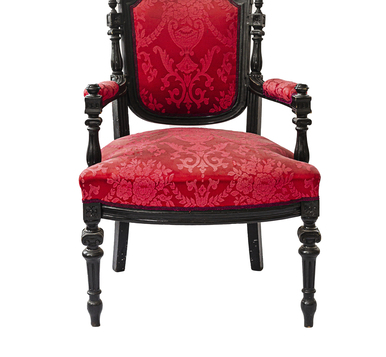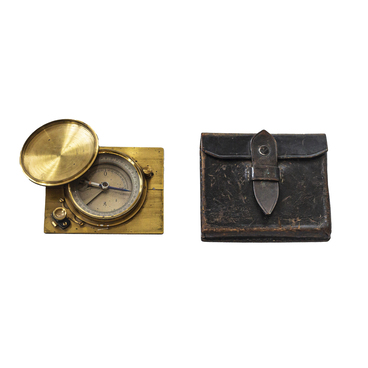French engraver Francois Frederic Chevalier made the lithographic picture “Equestrian Portrait of Emperor Alexander II” from a painting of the same name by the artist Karl Piratsky.
The Russian artist and battle-painter Karl Piratsky entered the Imperial Academy of Arts in 1828 as a pensioner of the Cabinet of His Imperial Majesty. In 1835, he was awarded a Minor Gold Medal for his work “The Interior of the Stables”. At this time, paintings were commissioned by Emperor Nicholas I himself, so the artist had no time to compete for a Major Gold Medal.
Piratsky graduated from the Academy in 1836 with a first-class certificate and was soon appointed His Majesty’s court painter with a salary of 3,000 rubles a year. In 1855, when the Military Ministry set up the Editors Office of Military Chronicle, Piratsky was appointed the head of the Drawing Department. In the same year, he was awarded the title of academician for his painting “Horseback Riding”.
Under the rule of Alexander II, Piratsky continued to work extensively on commissions from the Emperor. In particular, he executed a series of watercolors and drawings depicting parts of the Russian army. The artist also created illustrations for the publication “Historical Description of the Clothing and Armament of the Russian Forces”.
A French lithographer of the first half of the 19th century, Francois Frederic Chevalier, made the engraving of the Emperor’s portrait. He created 12 portraits for the “Pantheon of Famous Contemporaries”, which was published in St. Petersburg in 1838, and a series entitled “Portraits of Distinguished Persons in the War of 1853–1856”.
In 1991, by the order of the Ministry of Culture of the USSR, the State Hermitage Museum in St. Petersburg donated the engraving “Equestrian Portrait of Emperor Alexander II” to the Tyumen Museum of Fine Arts. Since 2018, the picture is part of the exhibition of the Kolokolnikovs’ Estate Museum. In this particular estate the future emperor Alexander II stayed overnight in 1837 during his journey around the Urals and Siberia. At that time, the estate belonged to the merchant of the second guild, Ivan Ikonnikov.
The engraving depicts Alexander II on horseback. The emperor is dressed in a military uniform with epaulets, embroidered gold collar and buttonholes, leggings with lampshades, and boots. Ribbon of the order, two order stars, and four crosses are depicted on the chest of the Sovereign.
The Russian artist and battle-painter Karl Piratsky entered the Imperial Academy of Arts in 1828 as a pensioner of the Cabinet of His Imperial Majesty. In 1835, he was awarded a Minor Gold Medal for his work “The Interior of the Stables”. At this time, paintings were commissioned by Emperor Nicholas I himself, so the artist had no time to compete for a Major Gold Medal.
Piratsky graduated from the Academy in 1836 with a first-class certificate and was soon appointed His Majesty’s court painter with a salary of 3,000 rubles a year. In 1855, when the Military Ministry set up the Editors Office of Military Chronicle, Piratsky was appointed the head of the Drawing Department. In the same year, he was awarded the title of academician for his painting “Horseback Riding”.
Under the rule of Alexander II, Piratsky continued to work extensively on commissions from the Emperor. In particular, he executed a series of watercolors and drawings depicting parts of the Russian army. The artist also created illustrations for the publication “Historical Description of the Clothing and Armament of the Russian Forces”.
A French lithographer of the first half of the 19th century, Francois Frederic Chevalier, made the engraving of the Emperor’s portrait. He created 12 portraits for the “Pantheon of Famous Contemporaries”, which was published in St. Petersburg in 1838, and a series entitled “Portraits of Distinguished Persons in the War of 1853–1856”.
In 1991, by the order of the Ministry of Culture of the USSR, the State Hermitage Museum in St. Petersburg donated the engraving “Equestrian Portrait of Emperor Alexander II” to the Tyumen Museum of Fine Arts. Since 2018, the picture is part of the exhibition of the Kolokolnikovs’ Estate Museum. In this particular estate the future emperor Alexander II stayed overnight in 1837 during his journey around the Urals and Siberia. At that time, the estate belonged to the merchant of the second guild, Ivan Ikonnikov.
The engraving depicts Alexander II on horseback. The emperor is dressed in a military uniform with epaulets, embroidered gold collar and buttonholes, leggings with lampshades, and boots. Ribbon of the order, two order stars, and four crosses are depicted on the chest of the Sovereign.



